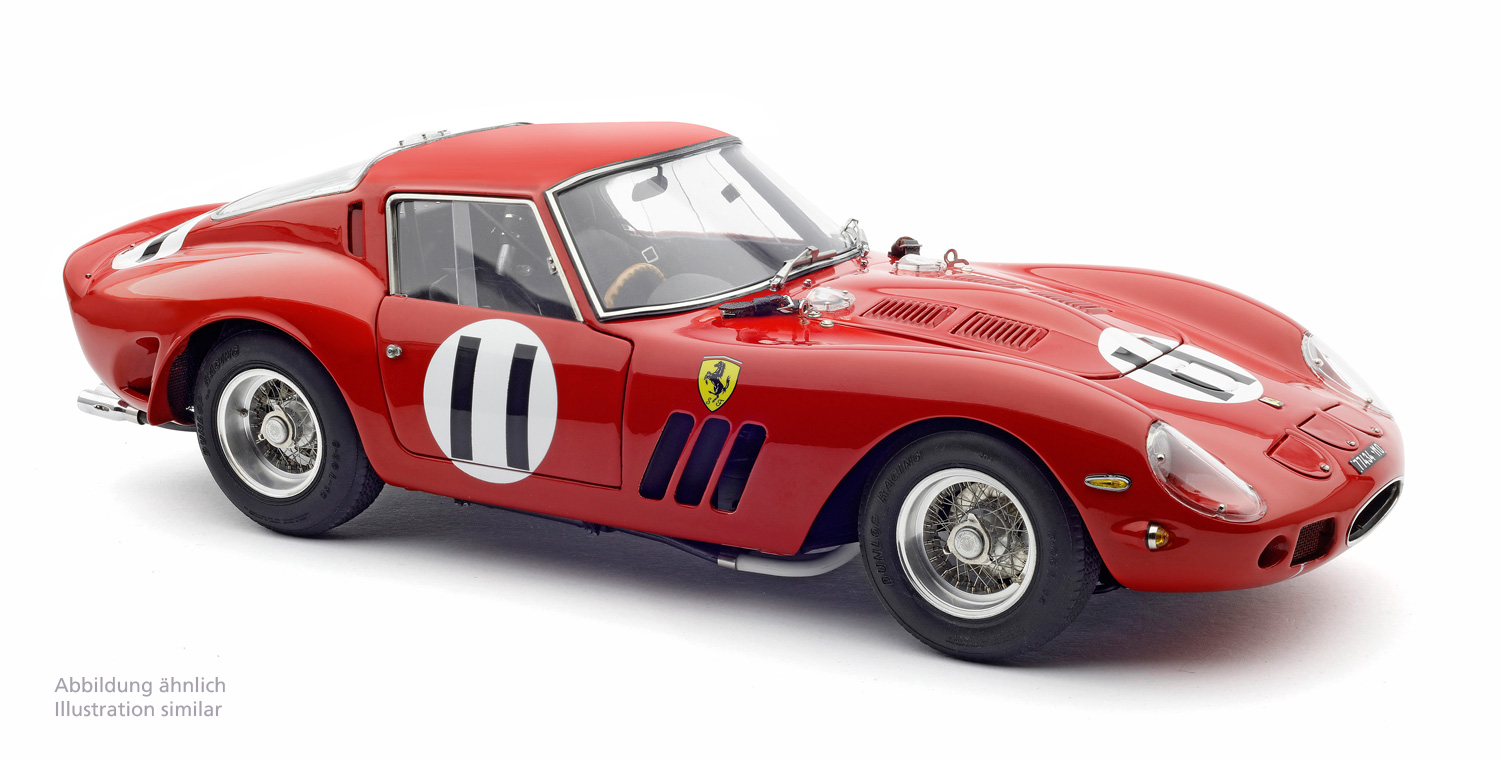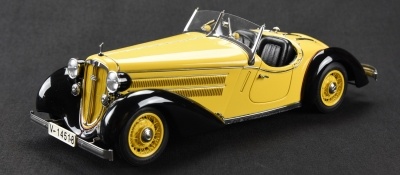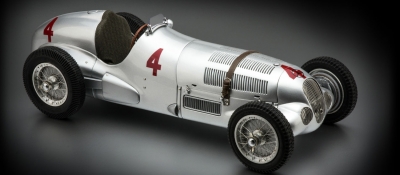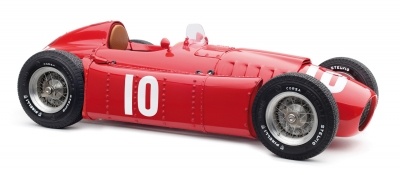CMC Ferrari 250 GTO, 1000km de Paris 1962, J.Surtees/M.Parkes, #11
Limited Edition 2000 pcs.
The 250 GTO from the 1960s exerts a very special fascination on Ferrari fans. With it, the Scuderia succeeded in creating the racing car of the century, which still enjoys cult status today – because of its many sporting successes as well as its timeless elegance.
$738.00
HISTORY (ORIGINAL VEHICLE)
Completed in June of 1962, chassis 3647GT was destined for Col. Ronnie Hoare’s Bowmaker racing team in England. It was raced by John Surtees successfully until he suffered a major accident at Goodwood in August. Once rebuilt, this right-hand-drive 250 GTO was sold to a France-based Prince Zourab Tchkotoua from Russia, who campaigned it at select events but had another major accident at Goodwood in 1963, almost a year later to the day. Following the second rebuild, chassis 3647GT was raced in Italian local events before it was sold to the United States. The car presented by CMC was raced by John Surtees/Mike Parkes with start number #11 to a 2nd OA and 2nd IC finish at 1000km Paris, Montlhéry on Oct 21, 1962.
Legal Disclaimer
The use of manufacturers’ names, symbols, type designations, and/or descriptions is solely for reference purposes. It does not imply that the CMC scale model is a product of any of these manufacturers.
The use of racing term and/or driver names, symbols, starting numbers, and/or descriptions is solely for reference purposes. Unless otherwise stated, it does not imply that the CMC scale model is a product of any of these racing teams/drivers or endorsed by any of them.
Related products
Products
Made with Love
Links
Media
Shop
Contact
between 9 am and 5 pm









